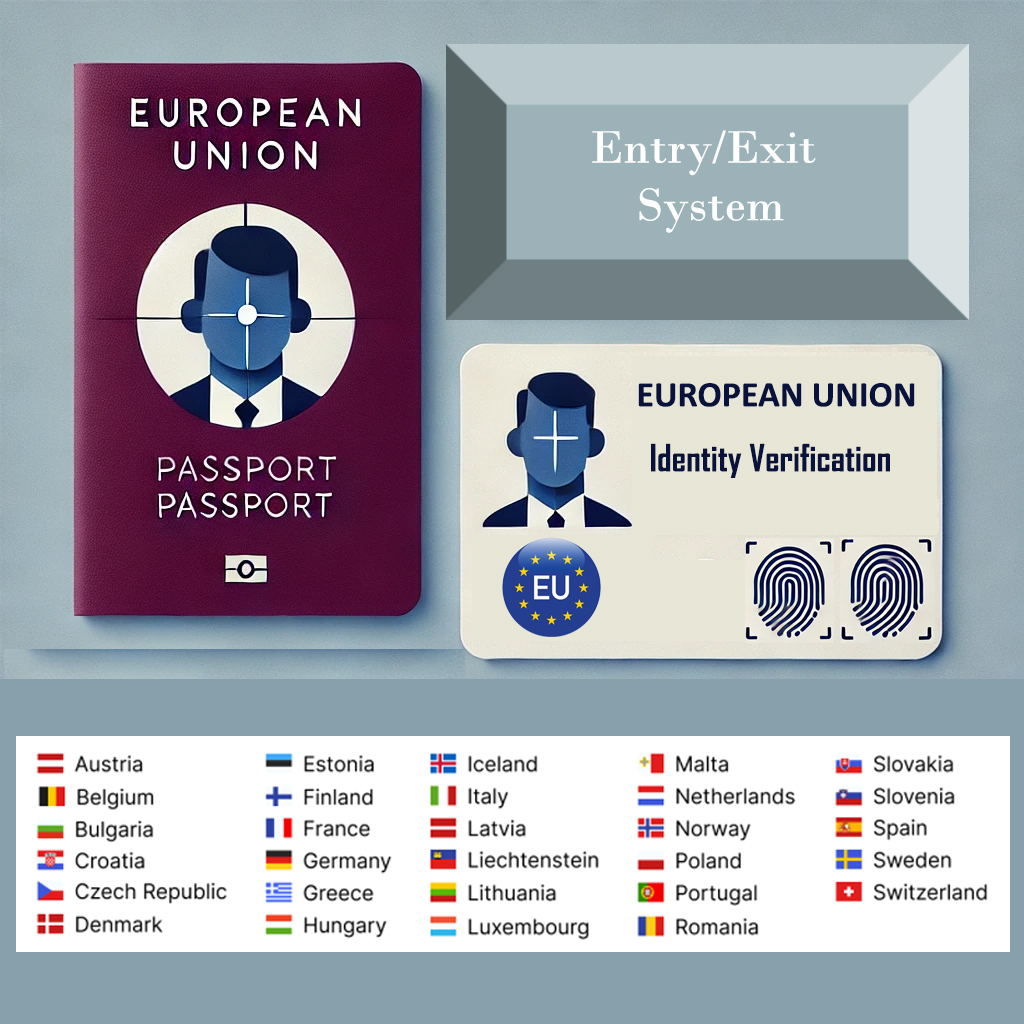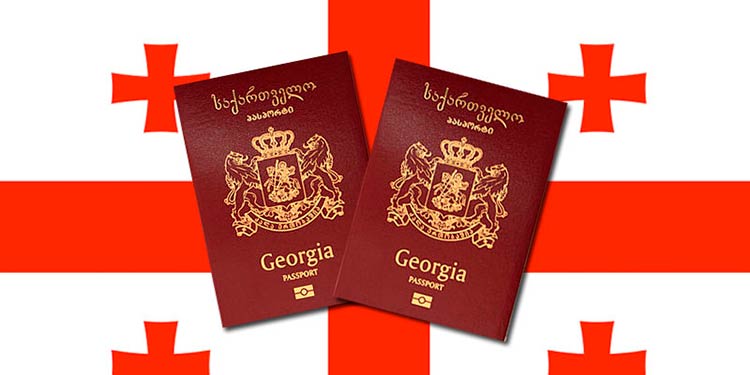The Entry/Exit System (EES)

What is the EES?
The Entry/Exit System (EES) is an automated IT system for registering non-EU nationals travelling for a short stay, each time they cross the external borders of any of the following European countries using the system:
•AUSTRIA
• BELGIUM
• BULGARIA
• CROATIA
• CZECHIA
• DENMARK
• ESTONIA
• FINLAND
• FRANCE
• GERMANY
• GREECE
• HUNGARY
• ICELAND
• ITALY
• LATVIA
• LIECHTENSTEIN
• LITHUANIA
• LUXEMBOURG
• MALTA
• NETHERLANDS
• NORWAY
• POLAND
• PORTUGAL
• ROMANIA
• SLOVAKIA
• SLOVENIA
• SPAIN
• SWEDEN
• SWITZERLAND
For the purpose of the EES, ‘non-EU national’ means a traveller not holding the nationality of any European Union country or the nationality of Iceland, Liechtenstein, Norway or Switzerland.
‘Short stay’ means up to 90 days within any 180-day period. This period is calculated as a single period for all the European countries using the EES.
Which countries’ nationals must be registered in the EES?
The system applies to you if you are a non-EU national and you:
- need a short-stay visa to travel to the European countries using the EES
or
- do not need a visa to travel for a short stay in the European countries using the EES
Your entries and exits, or entry refusals will be electronically registered in the EES.
In Cyprus and Ireland, despite being countries of the European Union, passports will still be stamped manually.
Exemptions to registration in the EES apply - see To whom does the EES not apply?
What are the benefits of the EES?
1. The Entry/Exit System modernises the management of the EU’s external borders, gradually improving the experience for travellers.
2. It identifies overstayers and provides reliable data on entries, exits, and refusals of entry.
3. This system will effectively combat identity fraud by collecting biometric data.
4. Security within the EU will be strengthened thanks to improved border checks, use of electronic records and biometric data.
5. The EES promotes real-time information sharing, ensuring that border authorities across the EU have the right information at the right time.
When will the EES go live? 2024
What is the EES for?
The EES modernises border management by increasing efficiency and quality of processes at the border and replacing passport stamping. It also simplifies travel and makes it safer.
Who is affected?
Non-EU nationals travelling for a short stay to a European country using the EES.
Exemptions apply – see To whom the EES does not apply?
The photo is the intellectual property of iuristi.com and its use is not allowed without permission.
კონსულტაციისთვის დაგვიკავშირდით
 საქართველოში
საქართველოში  598 419 416
598 419 416
თბილისი, ალ.ყაზბეგის №47 (მეტრო დელისი)
თბილისი, გურამიშვილის N23 ა (მეტრო ღრმაღელე)
 იტალიაში ქართველი ოპერატორი
იტალიაში ქართველი ოპერატორი  351 5 47 00 47
351 5 47 00 47
Italia, Bari, Piazza Nicola Balenzano, 12 A
მსგავსი სიახლეები

What is the EES?
The Entry/Exit System (EES) is an automated IT system for registering non-EU nationals travelling for a short stay, each time they cross the external borders of any of the following European countries using the system:
•AUSTRIA
• BELGIUM
• BULGARIA
• CROATIA
• CZECHIA
• DENMARK
• ESTONIA
• FINLAND
• FRANCE
• GERMANY
• GREECE
• HUNGARY
• ICELAND
• ITALY
• LATVIA
• LIECHTENSTEIN
• LITHUANIA
• LUXEMBOURG
• MALTA
• NETHERLANDS
• NORWAY
• POLAND
• PORTUGAL
• ROMANIA
• SLOVAKIA
• SLOVENIA
• SPAIN
• SWEDEN
• SWITZERLAND
For the purpose of the EES, ‘non-EU national’ means a traveller not holding the nationality of any European Union country or the nationality of Iceland, Liechtenstein, Norway or Switzerland.
‘Short stay’ means up to 90 days within any 180-day period. This period is calculated as a single period for all the European countries using the EES.
Which countries’ nationals must be registered in the EES?
The system applies to you if you are a non-EU national and you:
- need a short-stay visa to travel to the European countries using the EES
or - do not need a visa to travel for a short stay in the European countries using the EES
Your entries and exits, or entry refusals will be electronically registered in the EES.
In Cyprus and Ireland, despite being countries of the European Union, passports will still be stamped manually.
Exemptions to registration in the EES apply - see To whom does the EES not apply?
What are the benefits of the EES?
1. The Entry/Exit System modernises the management of the EU’s external borders, gradually improving the experience for travellers.
2. It identifies overstayers and provides reliable data on entries, exits, and refusals of entry.
3. This system will effectively combat identity fraud by collecting biometric data.
4. Security within the EU will be strengthened thanks to improved border checks, use of electronic records and biometric data.
5. The EES promotes real-time information sharing, ensuring that border authorities across the EU have the right information at the right time.
When will the EES go live? 2024
What is the EES for?
The EES modernises border management by increasing efficiency and quality of processes at the border and replacing passport stamping. It also simplifies travel and makes it safer.
Who is affected?
Non-EU nationals travelling for a short stay to a European country using the EES.
Exemptions apply – see To whom the EES does not apply?
The photo is the intellectual property of iuristi.com and its use is not allowed without permission.
 საქართველოში
საქართველოში  598 419 416
598 419 416 თბილისი, ალ.ყაზბეგის №47 (მეტრო დელისი)
თბილისი, გურამიშვილის N23 ა (მეტრო ღრმაღელე)
 იტალიაში ქართველი ოპერატორი
იტალიაში ქართველი ოპერატორი  351 5 47 00 47
351 5 47 00 47 Italia, Bari, Piazza Nicola Balenzano, 12 A




